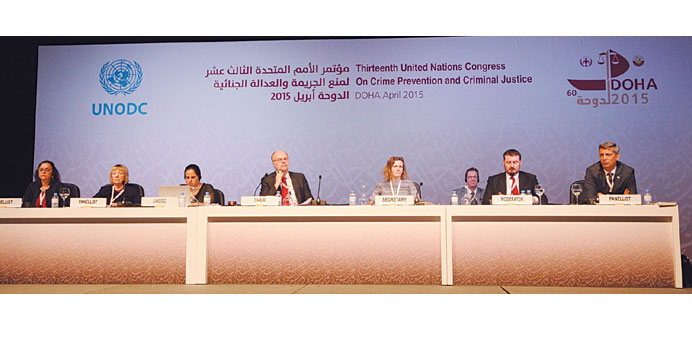With over 10mn people in prisons worldwide, prison overcrowding has reached epidemic proportions in many countries, a senior official from the United Nations Office on Drugs and Crime (UNODC) told the 13th UN Congress on Crime Prevention and Criminal Justice in Doha yesterday.
“Prison overcrowding can also be considered as a symptom of a malfunctioning justice system, and the problems of overcrowding have to be dealt with by the prison administration, although the solutions are seldom within their reach,” Piera Barzano, senior regional adviser of the Justice Section at UNODC, said during a side event.
There are usually several reinforcing reasons that may lead to prison overcrowding, according to her, and such causes are not confined to the limits of criminal justice but extend to other spheres of State responsibility such as welfare policy, access to health services, education, and employment.
The crime congress, which concludes tomorrow, is held every five years. It brings together governments, policy-makers and experts to consider how best to integrate crime prevention and criminal justice into the wider UN agenda. It also focuses on links between security and justice, and sustainable development.
“Prison overcrowding refers to the occupancy rate and the official capacity of prisons,” pointed out Barzano. It refers to situations where the number of prisoners exceeds such official prison capacity. More specifically, the rate of overcrowding is defined as that part of occupancy rate above 100% and is usually understood that occupancy above 120% can be considered as serious overcrowding.
Last year, 77 countries worldwide were reported having a prisoner occupancy rate higher than 120%, with some as high as almost 400%. Overcrowding also increases the risk of transmission of communicable diseases and poses an immense management challenge to prison administrations.

A session in progress at the 13th UN Congress on Crime Prevention and Criminal Justice in Doha yesterday. PICTURE: Shemeer Rasheed.


